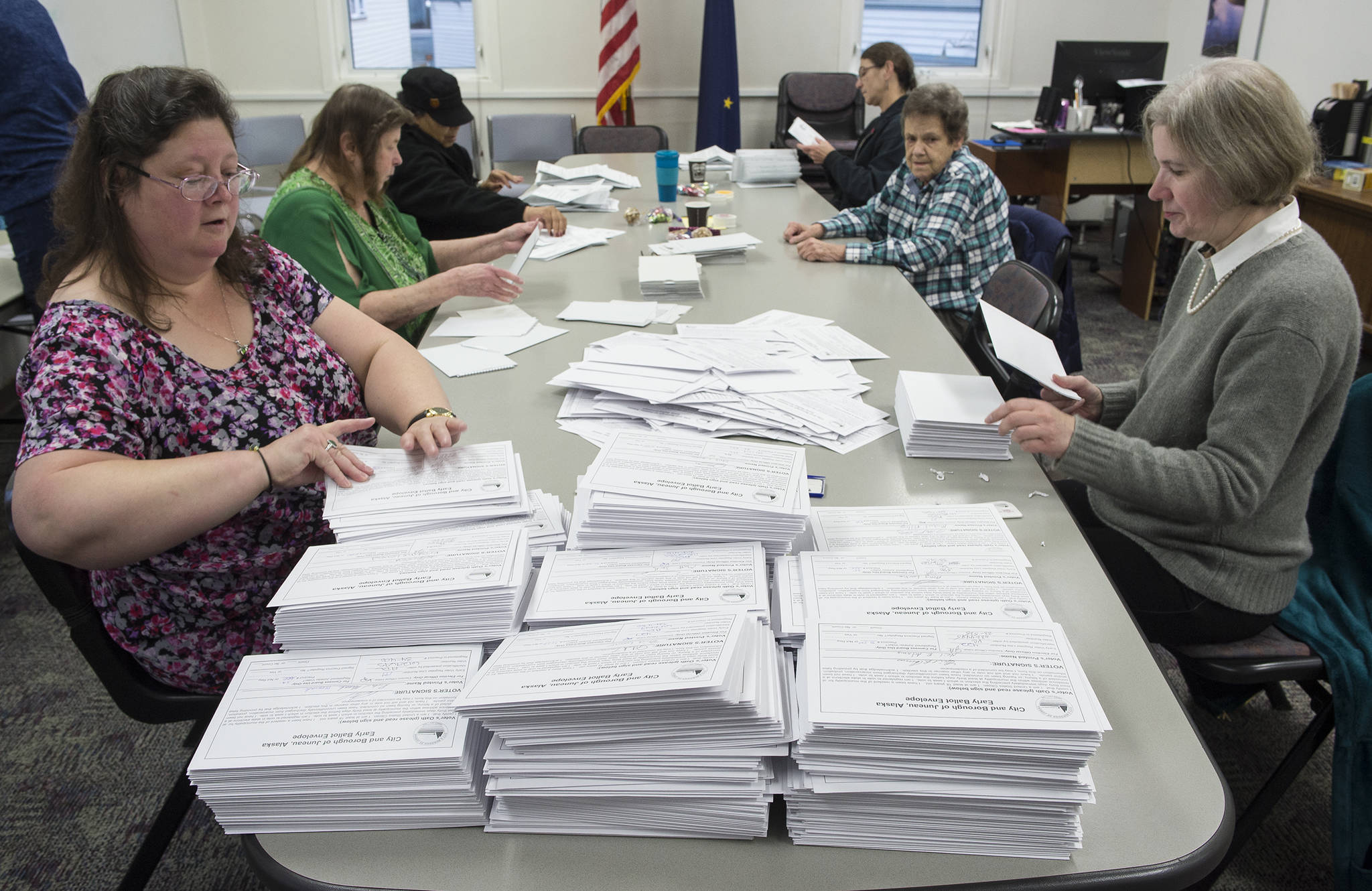Though the results are still unofficial until they’re certified this Tuesday, voter turnout climbed by nearly 7 percent thanks to absentee and questioned ballots counted Friday.
Turnout on Election Day itself was 21.3 percent, but after 1,239 absentee ballots and 462 questioned ballots were counted Friday, turnout is all the way up to 28.1 percent. This is still a drop-off from the 33.5 percent of registered voters who visited the polls in 2016.
The absentee and questioned ballots decreased by 91 and 100 from last year, respectively. The past 10 years, voter turnout has averaged almost exactly 29 percent, after averaging 38.04 percent the decade before that. None of the results, either for candidates or for the two ballot initiatives, changed as a result of the ballots that were counted Friday.
The City and Borough of Juneau Absentee/Questioned Ballot Review Board met Friday to open, process and examine the absentee and questioned ballots. In the morning, the members met to take absentee ballots out of envelopes and organize them into stacks.
They took care not to peek at how people voted by having an assembly line going where a person at the beginning of the line opened the envelope, the next person removed the inner envelope and the next person took the ballot itself and stacked it.
Becky Bear, who’s been working elections for more than 10 years, said that the process preserves secrecy but the members of the review board aren’t doing it in order to see who people voted for.
“Most of us don’t really give a damn who you voted for,” Bear said. “We give a damn that you voted.”
In the afternoon, the six election officials, along with Municipal Clerks Beth McEwen and Laurie Sica, met in the Assembly Chambers at City Hall to feed the nearly 1,700 ballots through three machines. Some ballots had errors on them, such as somebody voting for two candidates in a category where they were only allowed to vote for one. The machines would spit these out.
Sica explained that the election workers them would override the machines to allow them to read the ballots. The machine then would count the person’s votes in every category except for the one where the error was. For example, if somebody voted for multiple candidates in the District 1 Assembly seat (where voters could only vote for one candidate), that person’s vote in District 2 still counted, as long as that portion was filled out correctly.
On Election Day itself, the Lynn Canal Precinct led the way, with 29.1 percent of registered voters casting a ballot. Juneau Precinct 2 (downtown) was just behind at 28.5 percent, and North Douglas (28.2 percent) and Douglas (26.2 percent) were the next two. The worst turnout was in Lemon Creek, which saw just 13.4 percent of registered voters show up on Election Day.
McEwen said the results will likely be certified Tuesday afternoon, and that a few ballots might still come trickling in Tuesday morning. The final, certified count will be virtually the same as it was after Friday’s count, she said.
• Contact reporter Alex McCarthy at 523-2271 or alex.mccarthy@juneauempire.com.

